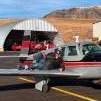HOLY SHIT. THAT COULD HAVE KILLED ME.
-
Members Online
- EricJ
- lamont337
- Echo
- rbmaze
- hubcap
- Geoff
- coinneach
- rotorman
- redbaron1982
- Butch
- ad5ut
- TangoTango
- hammdo
- IvanP
- Matthew P
- Fritz1
- MikeOH
- PeteMc
- KLRDMD
- AndreiC
- SKI
- pinkiedog64
- acekng1
- Austintatious
- Birdheadevo
- wingslevel
- Scott Ashton
- kkelley85
- eman1200
- Mreed420
- PT20J
- larryb
- hazek
- Vance Harral
- ericrynehess
- TheAv8r
- Paul Thomas
- Sam Judd


Recommended Posts
Join the conversation
You can post now and register later. If you have an account, sign in now to post with your account.